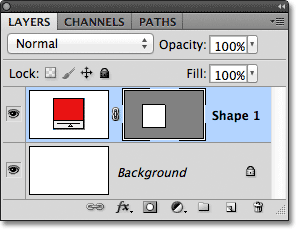Mastering Photoshop Shapes and Shape Layers: A Comprehensive Guide to Essentials

Introduction:
Adobe Photoshop, a powerhouse in the realm of digital design, provides a vast array of tools and features to bring creative visions to life. Among these tools, Photoshop Shapes and Shape Layers stand as fundamental elements, serving as the building blocks for intricate designs and compositions. In this extensive guide, we will embark on a journey to unravel the essentials of Photoshop Shapes and Shape Layers, exploring their features, applications, and the nuanced techniques that empower designers to craft visually captivating and precise designs.
Understanding Photoshop Shapes:
- Shape Tools: Photoshop’s toolbar boasts an assortment of Shape Tools, each designed for creating specific geometric forms or custom shapes. The basic Shape Tools include the Rectangle Tool, Rounded Rectangle Tool, Ellipse Tool, Polygon Tool, Line Tool, and Custom Shape Tool.
- Creating Shapes: Using the Shape Tools, designers can create shapes directly on the canvas. By clicking and dragging with these tools, shapes are formed as vector-based elements. This vector nature allows for scalability without loss of quality, making shapes adaptable to various sizes and resolutions.
- Shape Options: The Options Bar at the top of the Photoshop interface provides access to Shape Options. Here, designers can fine-tune aspects such as fill color, stroke color, stroke width, and other attributes depending on the selected Shape Tool.
Understanding Shape Layers:
- Shape Layer Basics: When a shape is created using a Shape Tool, it is automatically placed on a dedicated layer known as a Shape Layer. This layer contains the vector-based information of the shape, ensuring that it remains editable and scalable.
- Vector Masks: Each shape on a Shape Layer comes with a vector mask. The vector mask defines the visible area of the shape, allowing for selective editing and manipulation. By adjusting the vector mask, designers can control the visibility of different parts of the shape.
Essential Techniques for Photoshop Shapes and Shape Layers:
- Customization and Transformation:
- Procedure: Select a shape layer and utilize the Transform command (Ctrl/Cmd + T) to resize, rotate, or skew the shape. Alternatively, use the Direct Selection Tool (A) to manipulate individual anchor points.
- Benefits: Customization and transformation provide designers with the flexibility to adjust shapes according to specific design requirements. This ensures precision in design execution.
- Combining and Grouping Shapes:
- Procedure: Combine multiple shapes on the same layer or group shapes on separate layers. This is achieved by selecting the desired shapes and choosing the “Merge Shapes” or “Group Layers” option.
- Benefits: The ability to combine and group shapes opens avenues for creating intricate designs, patterns, or illustrations. Grouping shapes provides organizational benefits, allowing for easy management of design elements.
- Layer Styles for Shape Enhancement:
- Procedure: Apply layer styles, such as gradients, strokes, shadows, or bevels, to enhance the appearance of shape layers. Access layer styles by right-clicking on the shape layer and selecting “Blending Options.”
- Benefits: Layer styles add depth and dimension to shape layers, enabling designers to create visually engaging elements. Experimenting with layer styles provides a broad spectrum of creative possibilities.
- Clipping Masks with Shape Layers:
- Procedure: Use a shape layer as a clipping mask to reveal or hide portions of other layers. Select the layer to be clipped, right-click, and choose “Create Clipping Mask.”
- Benefits: Clipping masks with shape layers offer a non-destructive way to blend images or textures seamlessly with shapes, adding texture or complexity to designs.
Advanced Techniques:
- Creating Custom Shapes:
- Procedure: Designers can convert custom shapes, logos, or illustrations into custom shapes for repeated use. This is achieved by selecting the desired design, navigating to Edit > Define Custom Shape, and providing a name for the shape.
- Benefits: Creating custom shapes enables designers to build a library of personalized design elements, streamlining workflows and maintaining consistency across projects.
- Vector Masks with Shape Layers:
- Procedure: Combine the power of vector masks and shape layers for intricate masking effects. Draw a shape, convert it to a vector mask, and use it to reveal or hide portions of an image or layer.
- Benefits: Vector masks with shape layers provide precise control over image visibility, enabling designers to create visually intricate and refined compositions.
- Smart Objects with Shape Layers:
- Procedure: Convert shape layers into Smart Objects for non-destructive editing. Right-click on the shape layer and select “Convert to Smart Object.”
- Benefits: Smart Objects retain the vector-based information of shape layers while allowing for additional transformations and adjustments without compromising image quality.
Practical Applications:
- Web Design Elements: Photoshop Shapes and Shape Layers are indispensable for creating web design elements such as buttons, icons, dividers, and backgrounds. Their scalability ensures adaptability to various screen sizes and resolutions.
- Logo Design: The flexibility and precision of shape layers make them ideal for logo design. Designers can leverage vector-based shapes to achieve polished and professional logos that convey brand identity effectively.
- Illustrations and Graphic Design: Combining and customizing shape layers provides a powerful toolkit for illustrations and graphic design. Designers can create intricate designs, patterns, or visual narratives using the versatility of shape layers.
- Print Materials: Shape layers play a crucial role in print materials, contributing to the design of business cards, flyers, posters, and more. Their vector nature ensures print materials maintain quality across different sizes.
Conclusion:
Photoshop Shapes and Shape Layers form the bedrock of digital design in Adobe Photoshop. Whether crafting web elements, logos, illustrations, or print materials, mastering these essentials empowers designers to bring creative visions to life with precision and versatility. As you navigate the expansive world of design, let Photoshop Shapes and Shape Layers be your trusted companions, unlocking a realm of creative possibilities. Happy designing!




